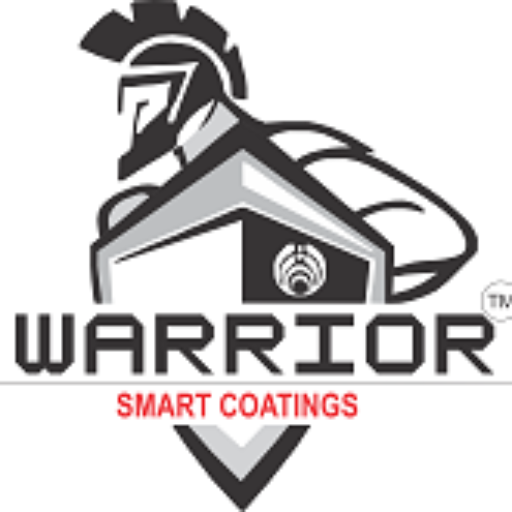In today’s world there is a growing interest towards nanotechnology due to its ability to create cost effective, lighter & faster products by consuming very less amount of raw materials & energy. Self-cleaning or easy to clean coating which are based on nanotechnology have high potential in commercial products & have ability to reduce the cost of cleaning labour. For example, a fabric with self-cleaning or easy to clean effect will not only prove cost effective by reducing its cleaning cost but also have high durability.
Self-cleaning coatings are based on property of super hydrophobicity. Self-cleaning surfaces work by being extremely repellent to water but often stop working when they are damaged or exposed to oil. The new developments in nanotechnology able to create a more resilient surface that is resistant to everyday wear and tear so could be used for a wide range of real-world applications from clothing and cars.
Self-cleaning or easy to clean coatings clean themselves by rolling droplets & carries away dirt with them. The nanopolymers present in these coatings bond to the surface & create a transparent, waterproof layer. Water & other liquids roll down the surface in a form of regular spherical shape droplets taking away dirt which accumulated on the surface.
The Self Cleaning Coating is originally inspired by “lotus-effect” because of its similarity to the natural property of lotus leaves of being super hydrophobic & repels the water from its surface in similar manner.
Self-cleaning coatings can be of 2 types: Hydrophobic or hydrophilic. Usually superhydrophobic, self-cleaning coatings have their water contact angle greater than 150°. In order to create a superhydrophobic self-cleaning surface, two requirements must be met. First, the surface should have low surface energy (hydrophobic). Second, the surface should have a roughness in nano-range. Such a surface can be achieved by a combination of low sliding angle and high contact angle. Therefore, the efficiency of a self-cleaning coating is dependent on the roughness and chemical composition of the surface and dirt particle adhesion to water droplet.
The high contact angle can be attained by lowering the surface energy. The commonly used reactive molecules for low surface energy modification are mainly long alkyl chain thiols, alkyl or fluorinated organic silanes, per-fluorinated alkyl agents, long alkyl chain fatty acids, polydimethylsiloxane-based polymers or other polymers, or their combinations
Low sliding angle can be achieved by creating a surface where the contact of the bubble with the surface can be minimized. Nanoparticles present in these kinds of self-cleaning or easy to clean coatings modify the surface by creating micro or nano needle like structures, which can reduce the contact angle between the water droplet & the surface. The water droplets hence do not wet the surface and easily slide to remove dirt. Nanoparticles such as nano-ZrO2, nano-ZnO and nano-TiO2, nano- SiO2 are often used to introduce such kind of surface roughness.
The hydrophilic self-cleaning coatings are based on photocatalysis: when exposed to light, they are able to break down impurities. The organic dirt absorbed on the surface is broken down chemically by photocatalysis and water washes the dirt away by forming sheets due to the low contact angles. Titanium dioxide (TiO2) is widely used for creating hydrophilic self-cleaning surfaces, due to its favorable physical and chemical properties.
Self-Cleaning Coatings are widely used in different industrial areas to improve the usability and functionality of varied materials. It can be applied on solar panels, glass windows, stain resistant textiles, corrosion prevention and anti-biofouling surfaces to provide self-cleaning or easy to clean effect.
Glass: Self-cleaning coatings are widely used in glass manufacturing industries where they are particularly used in the windshields to prevent the droplets of water sticking to the glass and making the windshield easier to clean.
Solar Panels: Dirt can reduce the efficiency of solar panels by up to 30 percent. Ideally solar panels should be cleaned in few weeks which can be time consuming, costly or even can corrode the frame of solar panels. Self-cleaning coating is a solution to dirty solar panels. Dirt particles will be corroded by application & washed away by rain.
Textile: The interest of using easy to clean or self-cleaning coatings in textile industry is also increasing due to their better affinity for fabrics & the fact that they increase the durability of the fabric without affecting breathability, hand-feel or appearance of the fabric. Self-cleaning fabrics are not only resistant to coffee and red wine stains but are also repellant to water & dirt.
Reinste Nano Ventures is the Manufacturer, Importer, distributor, supplier of wide range of nanomaterials & high quality, affordable, Self-Cleaning coatings in India. Reinste provides 4 product lines Aqua & Dirt Repel, Ever Dry, Germ Shield and Clean & Shield. These product lines are represented by ready to use, easy to apply, cost effective, spray on Nanocoatings for different surfaces like Glass, Wood, Plastic, Metal, Ceramics, textiles & many more. All of these coatings are non-toxic & 100% Eco-friendly. These coatings are beneficial for both house hold and industrial applications.
Contact us to buy or to get more information of our products.
